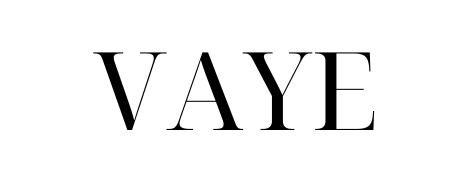
Budget planner with folders: how to get a grip on your money
Share
Do you ever find yourself at the end of the month wondering: where did my money go? You felt like you were living pretty well, and yet suddenly your bank account is empty. Sound familiar? You're not alone. That's precisely why more and more people are using a budget planner with folders to keep track of their finances.
The idea is simple: you divide cash into different folders, each representing a specific expense. Think groceries, outings, gifts, or savings. So you're not working with your debit card or banking app, but with physical cash that you divide yourself. And that really makes a difference. Not vague or complicated, but simply practical and clear.
In this blog post, I'll explain exactly how a budget planner with folders works, why it's useful, and how you can get started. I'll also give you tips on how to stick with it in a fun way – and yes, it can even be a little addictive (in a good way).
What is a budget planner with folders?
A budget planner with folders is essentially a folder (often a nice A6 or A5 ring binder) with separate pockets or envelopes inside. Each folder represents a specific expense item, such as groceries, gas, gifts, outings, or savings goals. The idea is that at the beginning of the month, you divide your budget among these folders—literally, with cash.
This method stems from the so-called cash stuffing trend, which we explain in more detail in this blog post about cash stuffing . It's gaining ground in the Netherlands now too – and rightly so. It's clear, concrete, and surprisingly simple.
Why does this method work so well?
Why does a budget planner with folders work so well?
-
You gain immediate insight
As soon as you physically put money in folders, you know where it goes. You don't have to remember anything or look it up in your banking app. It's literally right there in front of you. You can check how much is left in your shopping folder or how much you've saved at any time. -
You become more aware of your expenses
When you work with cash, you're more aware of your expenses. Quickly withdrawing €20 for a sandwich here or a drink there doesn't feel as painful as taking a twenty-dollar bill out of a wallet. -
It prevents impulse purchases
Only have €50 in your "outings" folder for the rest of the month? Then you might skip that spontaneous patio visit. Once it's gone, it's gone, and that makes you more critical of your spending. -
It is clear and simple
No complicated apps to manage, no passwords to remember. Just cash and a few folders. Ideal for people who easily lose track. -
Saving becomes fun
Do you have a separate savings goal folder for things like a vacation or Christmas gifts? It's motivating to see your savings grow every week. Especially with a fun savings challenge !
Who is it suitable for?
For everyone, really. Students, families, young professionals, people who want to pay off their debt, or simply gain more control over their spending. Especially if you find yourself at the end of the month with no idea where your money has gone, this is a great way to regain control.
Even if you've tried budgeting through apps before but haven't been able to stick with it, a budget planner with folders is worth a try.
How to start a budget planner with folders
-
Step 1: Choose your categories
Think about your monthly expenses. Typical categories include groceries, outings, transportation, gifts, and savings goals. -
Step 2: Set your budget
Distribute your available budget across the selected categories. You can also use one of the budget trackers or forms to help you. -
Step 3: Get cash
Withdraw the amount in cash from the machine and divide it over the folders. -
Step 4: Stick to it
Only use money from the correct folder. No cheating!
Tips to persevere
- Use a nice budget binder that you like to use.
- Add cash envelopes with your categories to make it personal.
- Work with a savings goal – and use a savings challenge , for example, to turn it into a game element.
What do you need?
You don't need to invest much. A simple folder with envelopes will do the trick. But if you want a more fun and organized approach, consider a complete budget planner starter set . Consider:
- A budget binder
- Dashboards
- Save challenges
- Placeholders
You can buy everything separately or in one convenient set. A starter pack is highly recommended, especially if you're just starting out.
Conclusion
A budget planner with folders helps you get a handle on your money. It's simple, clear, and fun to use. By physically dividing your money into categories, you'll spend more consciously and save more effectively.
Ready to get started? Feel free to browse our collection of budget planners and cash-stuffing accessories . Or read more on the blog for more tips on managing money wisely.
